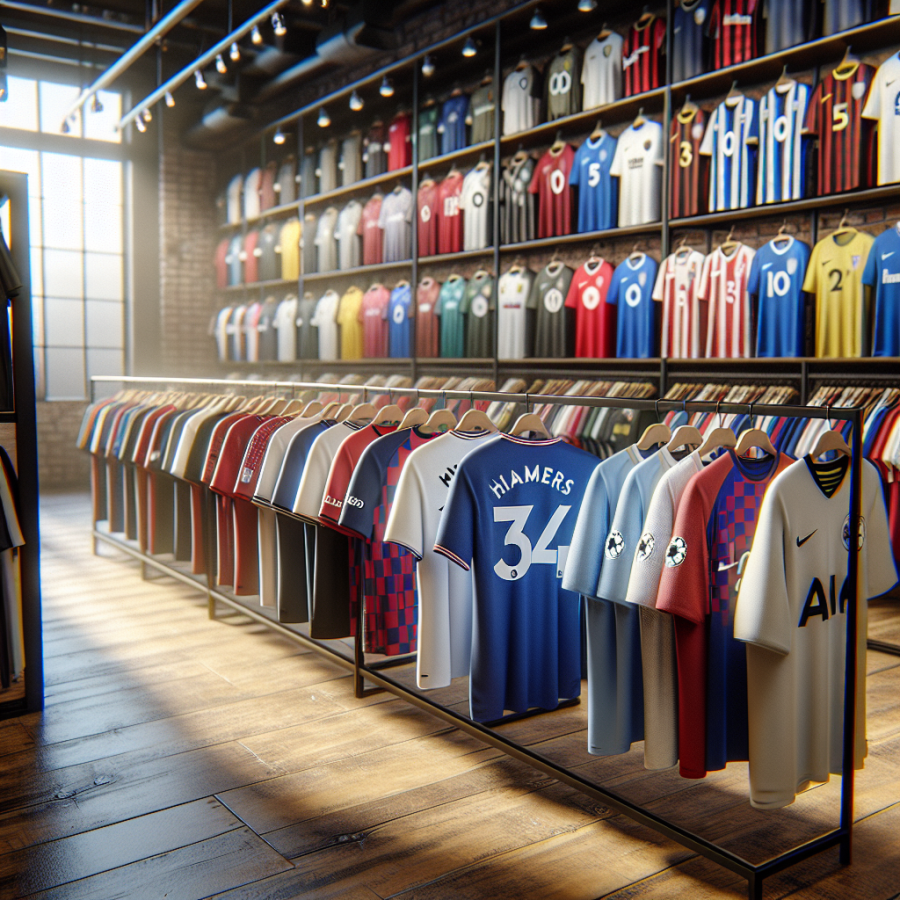Identifying Genuine Soccer Jerseys: A Step-by-Step Guide
Identifying genuine soccer jerseys is crucial for fans who want to support their favorite teams, while also ensuring that they are purchasing a quality product. To help you distinguish a real jersey from a counterfeit, here's a step-by-step guide that delves deep into the features and characteristics of official soccer apparel.
**Step 1: Familiarize with Official Features**
Start by acquainting yourself with the unique features of an official soccer jersey. This includes official club badges, manufacturer logos, and any holograms or authentication marks that come with licensed merchandise. Most genuine jerseys have these marks, and they can typically be found in specific areas such as the bottom of the shirt or near the tag.
**Step 2: Check the Quality of Material**
Authentic soccer jerseys are made with high-quality materials. The fabric should be lightweight, breathable, and designed to wick moisture away from the body. Counterfeit jerseys, on the other hand, may feel rough, heavier and less comfortable. Check the stitching as well; it should be even, straight, and without any loose threads.
**Step 3: Inspect the Logos and Printing**
When it comes to logos and printing, official jerseys typically have them embossed or heat-pressed into the fabric, which makes them less likely to peel off. Check to ensure that the logos are straight and properly aligned. Counterfeits often have logos that are off-center, of the wrong size, or simply ironed on. Pay close attention to the detail and quality of any lettering or numbers on the jersey.
**Step 4: Verify the Tags and Labels**
Genuine soccer jerseys come with specific tags and labels that indicate brand authenticity, size, manufacturing country, and care instructions. These tags are often on high-quality paper or fabric and are securely attached. Compare the information on these tags with official information provided by the club or manufacturer. Counterfeits may have misspellings, incorrect information, or lack these tags entirely.
**Step 5: Know the Seller**
Purchasing from official team stores, authorized retailers, or reputable online sellers is one of the most reliable ways to ensure jersey authenticity. Be wary of unauthorized sellers, especially those with prices that seem too good to be true. Check the seller’s reviews, return policy, and customer service responsiveness.
**Step 6: Examine the Packaging**
Often overlooked, the packaging itself can provide clues about authenticity.
Read also:
The Silent Strings: Inside the World of Air Guitar Champions
Tips and Tricks for Navigating the Market for Authentic Soccer Jerseys
For soccer enthusiasts and collectors alike, ensuring the authenticity of a soccer jersey is paramount. Not only do knock-offs fail to capture the true essence and quality of your favorite team’s gear, but they're also a financial drain and a disappointing purchase. Here are several tips and tricks for navigating the market and making sure the soccer jerseys you buy are legit.
**Research Authorized Retailers**
Before making any purchase, familiarize yourself with the brands and retailers that are officially licensed to sell soccer jerseys. Each major soccer club typically has an official store or a list of authorized retailers. When in doubt, buying directly from a team's official store or a well-known shop like Adidas, Nike, or Puma, who also manufacture these jerseys, is your safest bet.
**Understand the Price Point**
Authentic jerseys are typically not cheap, due to the quality of materials and technology used in manufacturing them. While it's tempting to go for a deal that seems too good to be true, it usually is. Be wary of jerseys being sold at a significantly lower price point than what is found at authorized retailers.
**Know the Details to Look for**
Real soccer jerseys come with specific features that counterfeit ones often lack. This might include official league badges, holographic tags, proper stitching, and high-quality materials. Pay special attention to the crest and lettering; authentic jerseys will have these elements stitched or heat-pressed on with quality and care.
**Check for Player Version vs. Replica**
Understand that there are two main types of authentic jerseys – the player version and the replica. The player version is what professionals wear on the pitch and features performance-enhancing technologies. Replicas are slightly less expensive and are designed for fans to wear. Both types should still come with authentication markers.
**Online Authenticity Checks**
Many brands now include serial numbers or QR codes on their jerseys as an anti-counterfeiting measure. Customers can check these codes on the brand’s website or through an app to verify their purchase.
**Use Trusted Online Platforms**
If you're shopping online, use trusted websites. Sites like eBay can offer authentic jerseys, but it’s crucial to check the seller's ratings and reviews. Look for power sellers or those who have verified authentic merchandise through user feedback and seller ratings.
**Inquire About Return Policies**
Reputable sellers should have a sound return policy in case the jersey is not authentic or as described.




